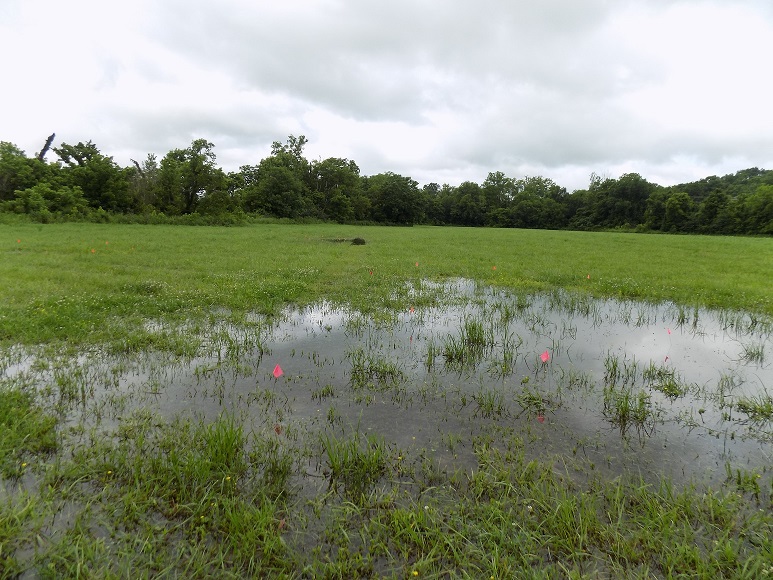Dr. Eubanks and the students did their orientation on campus on Monday and started up today. I was out of town at a conference in Santa Fe but was able to stop by and take a look at the progress on my way back from the airport in the afternoon. Unfortunately, the "rain in spain" that should have fallen "mostly on the plain" actually came down in Castalian Springs on Sunday and Monday -- nearly 4 inches on my weather gauge. So, the water table was very very high today.

In their first day in the field, they began with something that might seem relatively boring to some readers and maybe even to students -- not a search for treasures, but rather an exercise in "science." In order to try to understand where things are, students are doing a shovel testing program over the entire field. This involves digging a relatively small hole every 20 meters (about 65 feet apart) down to about a meter (3.5 feet) to find artifacts and then look at how they are distributed (using statistics and computer programs. Below, the five excavation crews are scattered across the approximately 9-acre field that includes "The Lick."

Unfortunately, most of the shovel tests are encountering what appears to be a perched water table at various depths -- groundwater "trapped" above relatively impermeable clays.
This makes things more than a little mucky at this point, although we expect this to recede relatively quickly (unless/until more rain arrives). In other cases, they are excavating into groundwater under some pressure and the water rises rapidly to near the surface of the unit. Here Miranda and Trey struggle to stay ahead of their new artesian well.
Clearly, the groundwater hydrology of this field is very complex -- and if the rain continues will provide some challenges for excavation. On July 6, 2005, we encountered this same issue in one of our excavation units on the north edge of the field. With a rain upstream, the water rose into the unit overnight.

The spread-out nature of the crews will certainly ensure that Dr. Eubanks gets plenty of walking in over the next few days...

Even on the first damp day, however, the testing program has yielded some significant insights. While we'll have to wait for a lab day to get the artifacts cleaned up and counted, Mississippian ceramics have been found in many of the tests -- along with evidence of human habitation in the form of chert flakes, cores, and other artifacts down to at least a meter. Most of this appears to be sealed beneath more modern flood deposits. No salt pans so far -- well that would kill the suspense if they turned up on the first day.
At the close of the day, the students hauled their equipment back across the bridge to wash them off for tomorrow.
